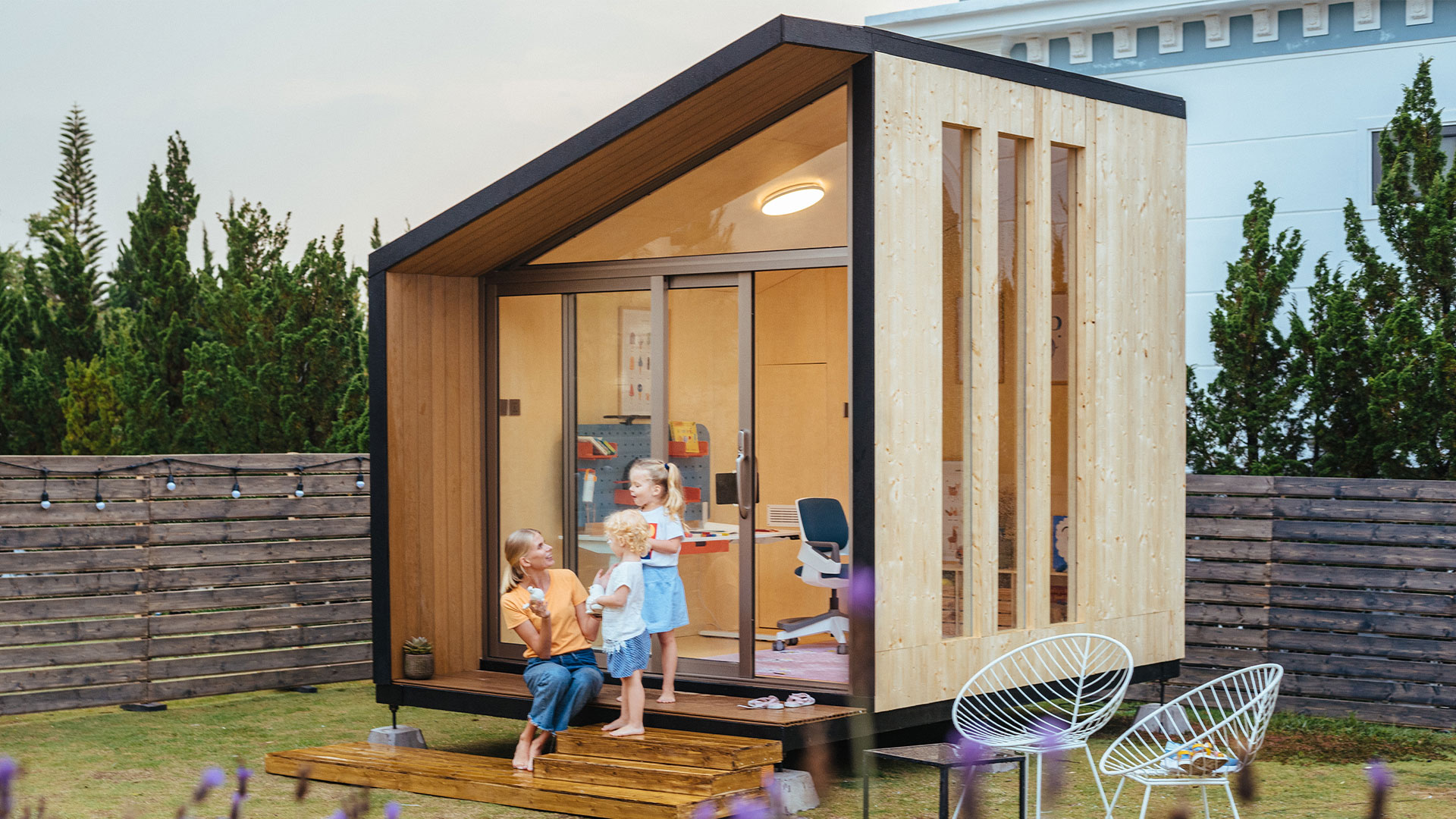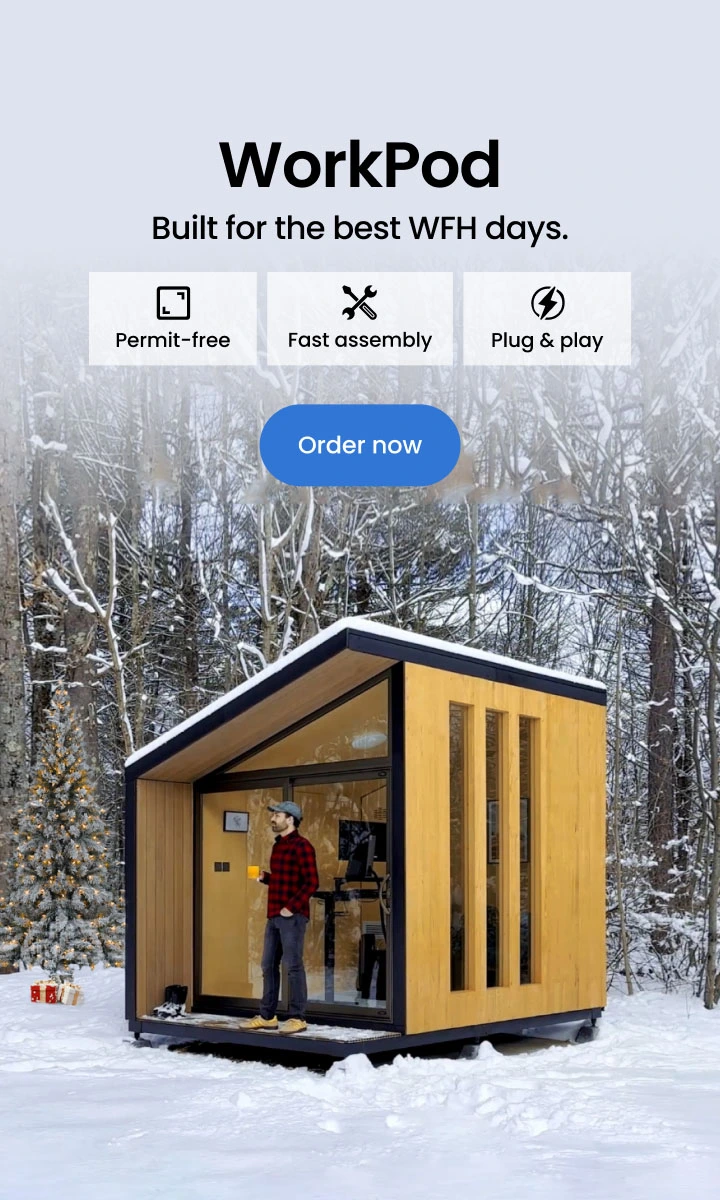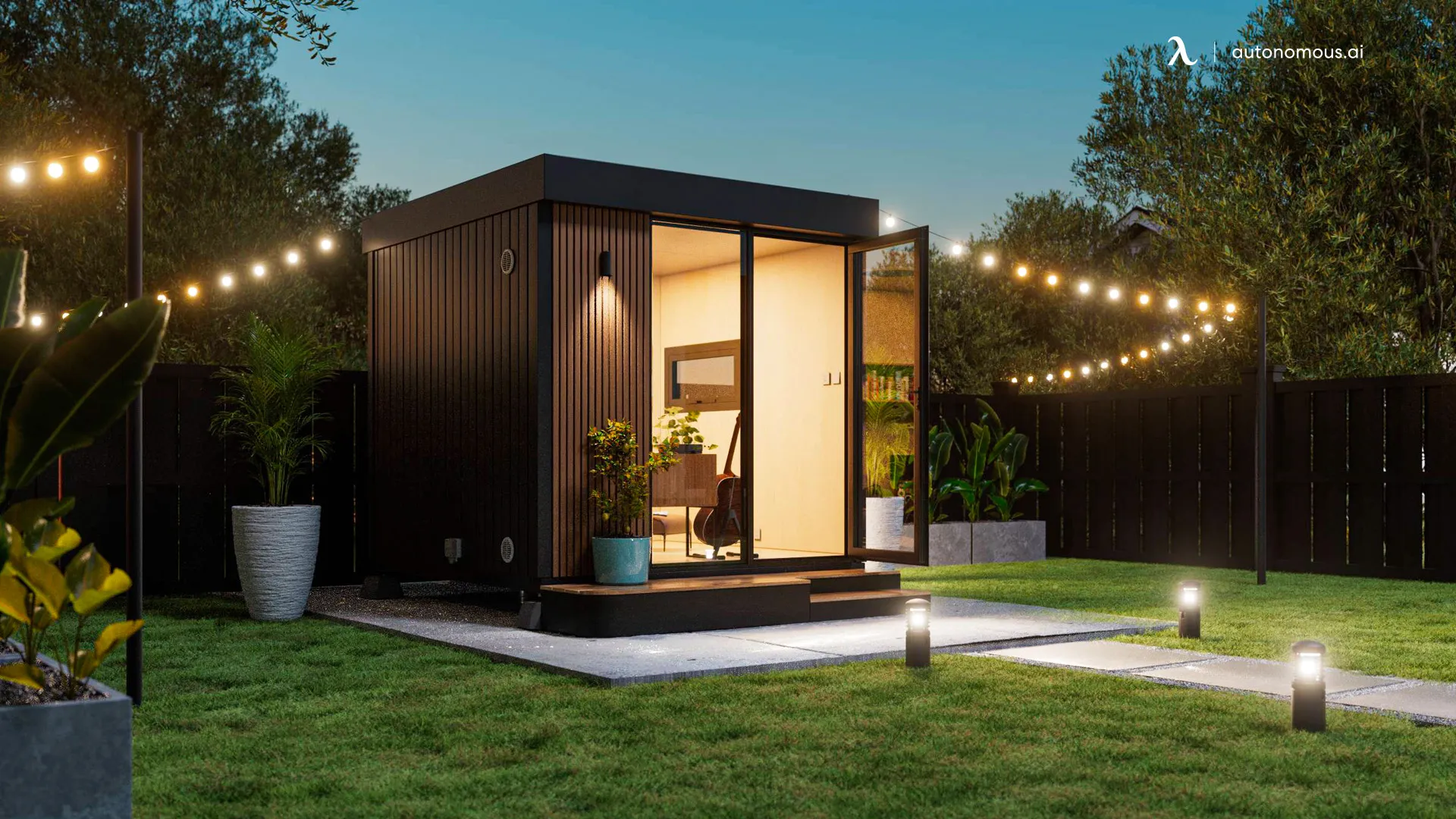
Can a Shed Have Electricity? Regulations and Hazards
Table of Contents
- Can You Have Electricity In Your Shed?
- Getting Electricity To Your Shed: Regulations And Hazards
- Guide To Installing Electricity In A Shed, Covering Wiring, Outlets, And Lighting
- How Much Does It Cost To Get Electricity To A Shed?
- Benefits Of Solar-Powered Sheds
- Plug And Play Prefab ADU Option
- FAQs
- Final Thoughts
Whether you're converting it into a home office, workshop, art studio, or backyard retreat, you'll need to understand the electricity to shed regulations in your area. It’s crucial to grasp the regulations, safety concerns, and what fits within your budget and lifestyle.
The main hurdle in electrifying a shed lies in connecting it to the home's electrical grid. Some properties may already have outdoor outlets that can supply power to a shed. That said, not all sheds serve the same purpose; for instance, a shed intended for a home office will require more power than one used merely for storage.
Here’s what you need to know about electricity and shed regulations.
Can You Have Electricity In Your Shed?
The answer to this question is yes. Many homeowners install electricity in their sheds to power lights, tools, computers, and other essentials. This is especially common when sheds are used as studio office sheds, wellness retreat pods or guest accommodations. However, the electricity to shed regulations vary depending on your location and how the space is being used.
In most cases, electricity to shed regulations require:
- A dedicated breaker or subpanel from your main electrical panel
- Underground wiring that meets burial depth and conduit standards
- Safety features like GFCI outlets and proper grounding
- Permits and inspections from your local building department
A whole process will go into setting up the electrical wiring and the indoor plumbing in the shed. Going with a prefab ADU, a fancy word for premade shed, may make the installation process much more manageable. Since they are premade, the shed’s electrical wiring will likely offer a plug-and-play solution.
If you’re planning something more personalized, like a she shed with electricity, you'll want to design with both comfort and code in mind—from cozy lighting to well-placed outlets for crafting tools or a reading lamp.
Powering the shed will be one of the biggest challenges every homeowner must face. There are home office sheds out there that just need to be plugged into an electrical outlet. Does it make sense to install solar panels to set up office sheds with electricity?
Figuring out how much power the shed will take up can help make that decision much more manageable. That’s one of the main advantages of buying pre-built sheds. Most companies that offer them will be able to provide that information without hesitation.
Getting Electricity To Your Shed: Regulations And Hazards
Can I run electricity to my shed without a permit? In most areas, the answer is no. You’ll need to apply for an electrical permit and possibly a trenching permit as well. Each part of the country is going to have its own regulations when it comes to insulated sheds with electricity. It involves understanding building codes, electrical safety standards, and permitting regulations. Installing a prefabricated ADU in the Bay Area will be different from placing a prefab ADU in Los Angeles. Understanding electricity to shed regulations starts with knowing your jurisdiction's electrical code.
The initial step in installing a shed is to determine the local regulations that apply to you. It’s wise to arrange for any needed permits before you buy a unit. When it comes to potential hazards, it's important to note that many accidents related to ADUs arise from inadequate wiring.
A great rule of thumb would be to ensure that any type of wiring needed to power any ADU appliances does not run bare outdoors. The wiring needs to be adequately covered, particularly if it will be consistently exposed to the elements. Hiring an electrical company to handle that process makes sense, even if the shed is premade and a plug-and-play option.
Another element often overlooked that can be a hazard is the land on which the shed will be sitting. Florida ADU laws tend to incorporate this element more because homeowners may be installing sheds in swampy land. At the very least, these sheds must be adequately insulated to withstand the rain and the moisture in the area.
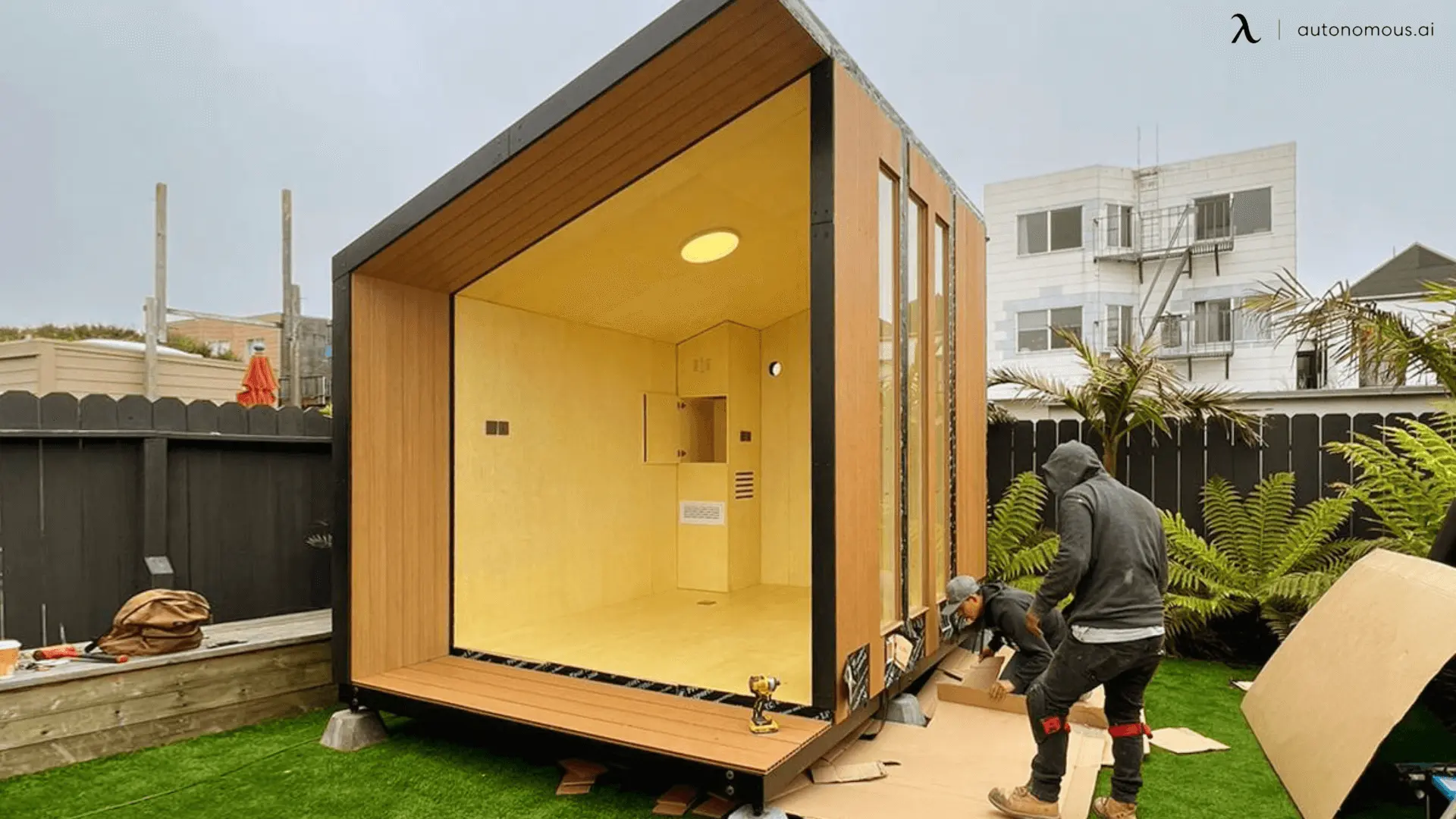
Guide To Installing Electricity In A Shed, Covering Wiring, Outlets, And Lighting
Bringing electricity to a shed involves several steps—from planning your electrical load to wiring outlets and lighting safely and up to code. Whether your shed is for storage, work, or relaxation, here’s a step-by-step look at how to supply electricity to a shed in compliance with electricity to shed regulations:
1. Plan Your Power Load
Before doing anything, take time to map out what your shed will require by asking yourself these questions:
- How many outlets do you need—and where?
- Will you need interior and exterior lighting?
- Are you running any high-power tools or appliances?
- Do you need climate control (like an electric heater or portable AC)?
- Will you need a dedicated subpanel?
This helps determine the total electrical load in watts or amps and guides wire gauge and breaker size selection.
2. Check Codes & Get Permits
Next, contact your local building department. Most jurisdictions require an electrical permit for any new wiring. You may also need a trenching permit if you're running underground wire from your house to the shed. To understand the exact requirements, visit your local building department
For example, in California, your permit application may need:
- A site plan showing the distance from the house
- Electrical layout diagram
- Load calculation worksheet
- Specification of materials (wires, outlets, breaker sizes)
3. Choose Power Source
The first that needs to be decided when installing electricity in a shed is where that electricity will come from. Being able to plug in an affordable backyard ADU directly to the house may be the easiest way to power it. There are things to consider in this situation as well, though.
From the house via a dedicated breaker:
- Install a new breaker in your main panel
- Run a dedicated circuit or subpanel to the shed
- Ideal for heavy or permanent use (e.g., offices, gyms, studios)
Solar panel system (off-grid option):
- Set up solar panels, battery storage, and an inverter
- Best for light-use sheds or when trenching isn't feasible
- Great for off-grid or eco-conscious builds
Another option that could be on the table is to power the ADU with an external generator. The viability of that option depends on the generator’s lifespan and initial cost. It may not be the best long-term solution in many cases.
4. Trench & Lay Conduit
One of the most important regulations to shed electricity is the required depth and protection of buried electrical cable. In most areas:
Wire Setup | Minimum Depth Required |
PVC conduit with THWN-2 wire | 18 inches |
Direct burial UF cable | 24 inches |
Rigid metal conduit | 6 inches |
5. Install Panel/Subpanel (if needed)
If your shed requires multiple circuits or heavy loads (e.g., HVAC, multiple devices), a subpanel in the shed is recommended or even required.
- Choose a 60–100 amp subpanel depending on your needs
- It must have its grounding rod
- Keep neutral and ground wires separate (this is a key code requirement)
6. Wire Inside
Once the power source is set, start running wiring electricity to a shed:
- Use NM-B or MC cable for indoor wiring
- Install electrical boxes for outlets, switches, and light fixtures. GFCI outlets, task lighting, and LED fixtures are popular choices—especially if you're building a she shed craft room or a remote work setup in a 10x10 office shed.
- Staple wire securely to studs (every 4.5 feet minimum)
- Keep wires at least 1.25 inches from the edge of studs or protect with steel plates
When the shed is connected directly to the main house, it’s super important to ensure the wiring is covered correctly. As was previously stated, the best way to avoid potential tragedies is to cover the shed’s electrical wiring accordingly. These wiring concerns are just considering that the prefab studio already comes with the internal wiring all set.
Creating an ADU from scratch in a backyard will be a completely different endeavor. Ensuring that the internal and external wiring is adequately covered in that situation is ideal. That’s not to say that internal wiring can be overlooked in pre-built options. Wiring electricity to a shed should also be a concern before purchasing.
7. Inspection
Before powering anything on, make sure to schedule an inspection to confirm that everything meets code standards. It's essential to get in touch with your local building department before flipping any switches. Local inspectors will verify that your installation meets all electricity to shed regulations before granting final approval, such as:
- The correct trench depth and type of conduit
- Proper grounding and bonding practices
- Safe and code-compliant wiring methods
- GFCI/AFCI protection measures
Do not overlook this crucial step—passing the inspection will ensure safety, compliance with regulations, and protection for your insurance.
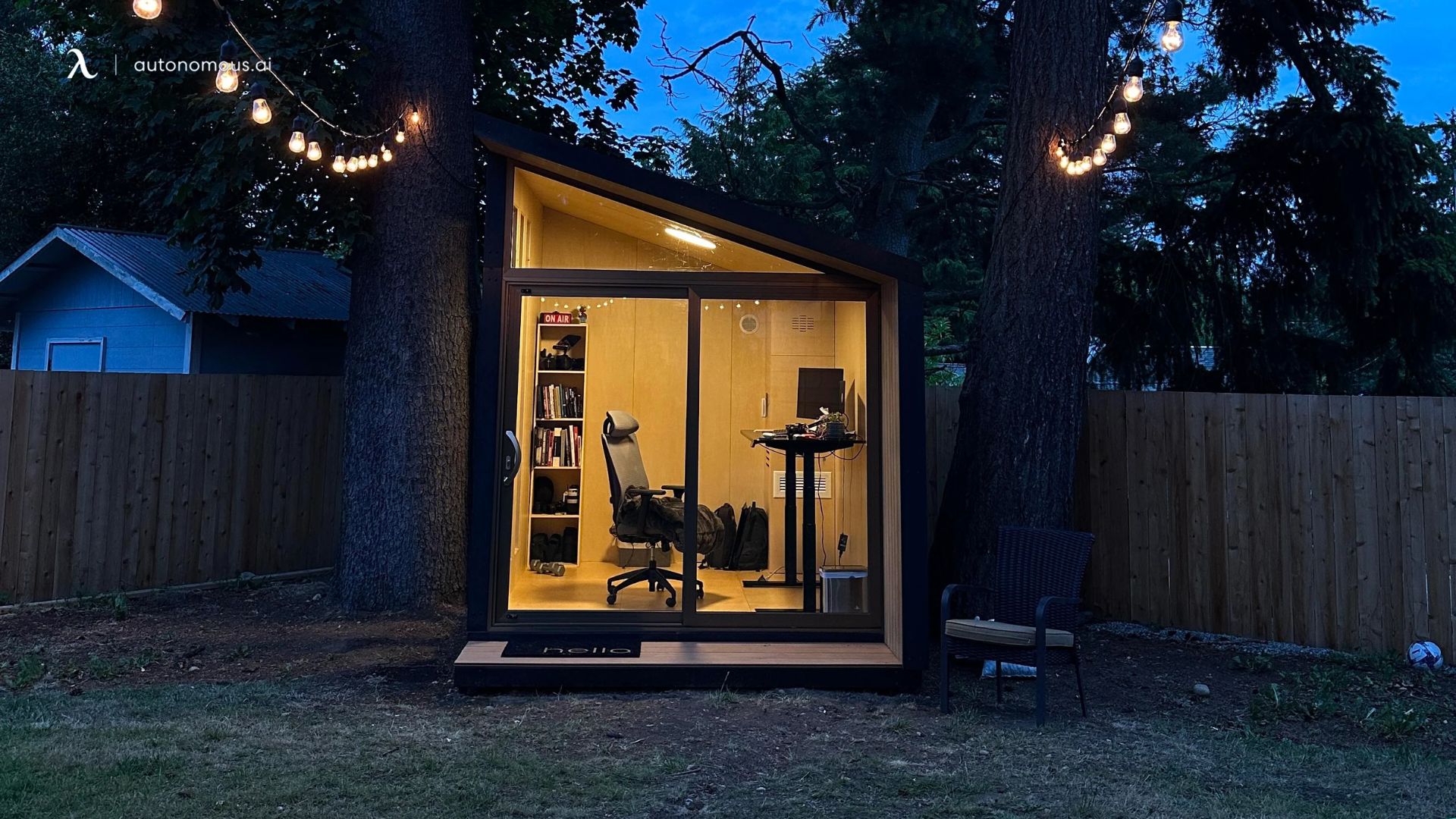
How Much Does It Cost To Get Electricity To A Shed?
The running electricity to a shed cost can vary significantly depending on distance, trenching requirements, and electrical load. Here’s a rough estimate:
Component | Estimated Cost |
Trenching & Conduit | $300–$1,200 |
Electrical Wiring & Labor | $500–$2,000 |
Subpanel Installation | $300–$700 |
Permits & Inspection Fees | $100–$500 |
Total Estimate | $900–$4,400 |
The estimates vary drastically. If you're bringing electricity to a shed that's far from the house or needs more complex wiring, costs can rise. If you’re outfitting a larger backyard setup like a 10x12 office shed, plan on higher power demand—and possibly more advanced wiring or climate control.
Why do these costs run along such a wide range? One reason is just how much power the shed will need to operate appropriately.
Going back to one of the main things that have been discussed here, it’s not the same thing to build a prefab backyard studio as it is to have a shed you use for storage. When a shed is used only for storage, the light there may not come on for days, weeks, or months. The 100-dollar estimate, in that case, could even be considered high.
When the space is used as an office, and computers must be up and running all day, the bill will skyrocket. In those situations, looking into powering the unit with solar energy makes more sense. Connecting the shed directly to the home can be too expensive, and keeping a generator on all day may be challenging.
Providing an accurate estimate of how much it would cost to power a shed requires knowledge of the individual unit that will be installed. The good thing for homeowners worried about the fixed costs that a shed with electricity will bring upon them is that running those numbers when they know what they want to build is not hard.
Benefits Of Solar-Powered Sheds
Solar power is an increasingly popular solution for powering backyard sheds, especially as energy costs rise and homeowners seek sustainable, off-grid alternatives. Whether you're building a shed for storage, a creative art studio shed, or a fully equipped backyard ADU, integrating solar power can offer both flexibility and long-term value.
If you’re inspired by the idea of a shared creative space like the we shed, a solar-powered setup can keep things functional, sustainable, and separate from your home’s electrical load.
Here’s a breakdown of why going solar might be the smartest option for your shed.
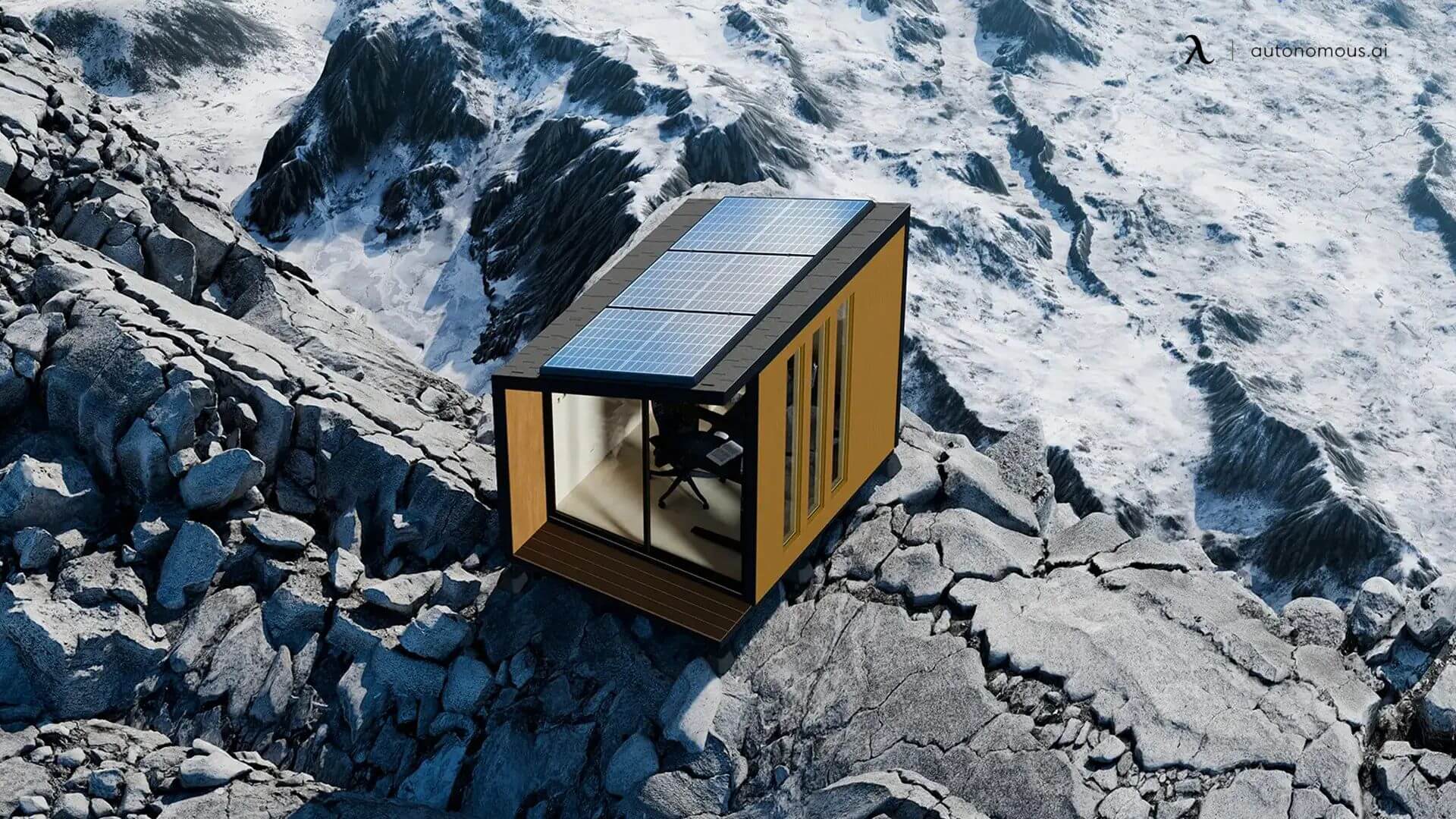
1. Energy Independence And Off-Grid Capability
One of the biggest advanoffice shed for backyard tages of a solar-powered shed is energy independence. With a properly sized solar setup, your shed doesn’t need to rely on the main house's electrical system—or the utility grid at all. In many areas, including parts of California, electricity to shed regulations are more flexible when using off-grid solar systems for non-habitable structures.
Ideal for home office pods or locations far from the main home
Eliminates the need to dig long trenches or install expensive underground wiring
Reduces vulnerability to power outages or rising utility rates
For rural properties or off-grid living, solar is often the most practical—and sometimes the only—way to bring electricity to a detached structure.
2. Lower Long-Term Energy Costs
While the initial cost of a solar setup may seem high, it often pays for itself over time through reduced or eliminated utility bills.
No ongoing monthly electricity cost
Minimal maintenance
Solar tax credits and state incentives may reduce upfront investment
Panels typically last 25–30 years, providing free energy for decades
This makes solar a great option for homeowners thinking long-term, especially if the shed will be used regularly.
3. Sustainable And Eco-Friendly
Solar power is a clean energy source with zero emissions. Choosing solar helps reduce your carbon footprint and aligns with eco-conscious living.
No fossil fuel consumption
Reduces demand on aging utility infrastructure
Encourages sustainable design practices for backyard spaces
For those building eco-friendly ADUs or trying to meet California’s Title 24 energy requirements, solar integration can be a key component of compliance.
4. Customizable Power Based On Use
Solar power systems for sheds are highly customizable. You can scale your setup based on how much energy you need.
Common components include:
Solar panels (roof or ground-mounted)
Battery storage (for nighttime and backup power)
Inverter (converts solar energy into usable AC power)
Charge controller (regulates energy flow to batteries)
This setup can support a wide range of uses, from basic lighting and phone charging to running computers, power tools, or even a mini-fridge.
5. Quiet Operation Compared To Generators
Unlike gas-powered generators, solar systems operate silently. This is a major benefit if your shed is being used as:
A backyard meditation room or music studio shed to fuel your creativity
A reading nook or a backyard yoga studio for a wellness retreat after long working hours
An office shed for the backyard where your peace is essential to boost your focus
It also means no fuel storage, no fumes, and no disruption to your garden or neighbors.
6. Ideal for Prefab Sheds And ADUs
Many prefab sheds and ADUs are now designed to be solar-ready, with wiring and roof pitches pre-configured for panel installation. These units are built to comply with electricity to shed regulations and can be connected to your home’s panel or powered by solar.
If you’re planning to install a prefab model like the Autonomous WorkPod, a solar kit can make the unit fully self-contained, perfect for eco-conscious homeowners who want plug-and-play convenience.
With the correct number of solar panels, there shouldn’t be an issue where insufficient energy is being generated to power the space. At the same time, though, before building the shed and deciding that solar panels are the way to power it, maybe considering how much space the unit and panels will take up is vital.
Plug And Play Prefab ADU Option
Buying a premade shed that can be directly connected to the main house is the easiest way to have that external room within a home. These units often arrive with pre-wired outlets, lighting, and even climate control, all up to code and ready to connect to your main power or a solar system. The wiring inside the shed should already be taken care of, so that removes the most challenging part of projects that are done from scratch.
Plenty of intriguing pre-built backyard ADU options are worth a look. Homeowners who want to discard this option because of the perceived lack of customization options may be doing themselves a disservice. Setting up a pre-built structure is much easier than building one from scratch.
If you’re looking for a hassle-free way to power your shed without the complexities of traditional wiring, the WorkPod Solar offers an innovative plug-and-play solution. Designed as a ready-to-use accessory dwelling unit (ADU), it combines sleek design, insulation, and renewable energy into a perfect backyard retreat. It’s a hassle-free solution that meets all major electricity to shed regulations right out of the box.
Why WorkPod Solar is the Perfect Option
- No Wiring Hassles: WorkPod Solar comes with a fully integrated electrical system powered by solar panels and a 10.2 kWh battery, eliminating the need for underground wiring or trenching.
- Regulation-Free Installation: At 102 sq. ft., it’s compact enough to bypass most permitting requirements while providing ample space for various uses.
- Eco-Friendly and Cost-Effective: By leveraging solar energy, WorkPod Solar helps you save on electricity bills while reducing environmental impact.
- Insulated and Comfortable: Its thermal insulation and soundproofing make it ideal for year-round use as an office, hobby space, or personal retreat.
Ready in Just Days
Unlike traditional sheds, which can take weeks to build and wire, WorkPod Solar can be installed and ready to use in as little as seven days. Simply set it up, plug it in, and enjoy a powered and insulated space.
For those considering prefab solutions, WorkPod Solar is an excellent alternative to traditional sheds with electricity.
FAQs
1. Can I run electricity to my shed?
Yes, you can run electricity to your shed, but you must follow local codes and permitting rules. Electricity to shed regulations typically require a permit, trenching for buried cable, and GFCI-protected outlets. Hiring a licensed electrician ensures the installation is safe and compliant.
2. How close can a shed be to power lines?
Clearance requirements depend on the voltage and type of utility line. As a general rule:
- Stay at least 10 feet horizontally from overhead power lines.
- Vertical clearance above a shed is often 12 feet or more, depending on local utility standards.
Check with your utility company and local electricity to shed regulations before placing or powering a shed near power lines.3.
3. How much power do I need for a shed?
It depends on your shed's use. A basic setup with lights and a few outlets may only require a 15–20 amp circuit. For higher loads—like heaters, mini-fridges, or workshop tools—you may need a 30–60 amp subpanel. Always calculate your total wattage to size the system correctly and stay within power to shed requirements.
4. Can I put a shed under a powerline?
Placing a shed directly under power lines is generally discouraged due to safety and access issues. Local zoning laws and utility easements may prohibit it altogether. Even if allowed, electricity to shed regulations will prevent you from installing certain electrical components too close to overhead lines.
5. What is the best way to power a shed?
The best method depends on location, budget, and usage:
- Direct wiring from your home’s panel is ideal for consistent, high-power needs.
- Solar power is great for off-grid or remote sheds, especially when trenching isn’t feasible.
Whichever option you choose, make sure your setup meets all applicable electricity to shed regulations for safety and legality.
6. How do I supply electricity to a shed that's far from my house?
If your shed is far from your main panel, you'll need to:
- Use a larger gauge wire to avoid voltage drop
- Possibly install a subpanel in the shed
- Trench and run conduit based on local depth requirements.
7. What's the cheapest way to get power to a shed?
For light use, solar power may be the most affordable in the long term—especially if trenching is costly. If you only need basic lighting or to charge small devices, a solar kit with a battery and inverter can keep your shed powered without connecting to the grid.
8. Can I run an extension cord to my shed instead?
Running a temporary extension cord is legal only for short-term use and light loads (e.g., power tools for an afternoon project). It is not a safe or code-compliant method for powering a shed regularly. For permanent power, proper wiring is required under electricity to shed regulations.
Final Thoughts
Understanding electricity to shed regulations is essential before running any wires or flipping a switch.
Electricity is something that only people with the proper experience should handle. With this in mind, getting help from a certified electrician is the safest option, even when installing a pre-built plug-and-play option. Potential hazards may only be evident to people with the proper experience.
Finally, choosing the best way to power the unit can go a long way toward making it a worthy investment. Solar panels may seem an unnecessary investment initially, but once the electric bill goes through the roof, they can start looking more appealing. Whether you're bringing electricity to a shed through trenching or opting for solar, be sure to follow your local regulations and prioritize safety. With the right planning, your shed can evolve into one of the most useful and inspiring parts of your property.
Spread the word
.svg)

